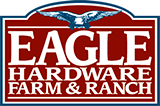A shortage of drinking water for your cattle can happen quickly during hot, dry summer months. Assuring good quality water for your animals also can be a challenge in warm weather.
Good quality water is one of the most important nutrients required by cattle and must be provided on a daily basis. In the summer, ponds and other sources of water can get low and concentrate any contaminates that may be present. Ponds also may have algae present that pose water quality problem. Further, water quality can be reduced because animals entering ponds may stir up mud.
Small changes in water management can result in improved performance and financial gains associated with decreased potential for illness and disease, according to the University of Florida (UF) Extension Service.
UF experts provide these tips to help you assure your cattle always have adequate, high-quality water:
– Offer water in adequate quantity for the number and type of animals on your property.
– At least two feet of accessible linear water space is needed per 10 head of cattle.
– Make sure that watering devices are spaced appropriately and located away from stream banks.
– Watering devices should be easily accessible by animals.
– Strategic placement of watering devices can influence grazing, compaction and nutrient deposition patterns.
– Avoid using pond water as a drinking source if possible. Recent research has shown that heifers with access to water pumped from a well or spring gained 23 percent more weight than heifers drinking pond water.
– Clean watering devices frequently.
– Test the water on your property for contaminants. Your county extension agent or beef cattle consultant can help you develop a testing plan and identify an appropriate laboratory.
